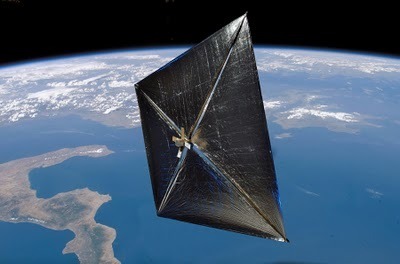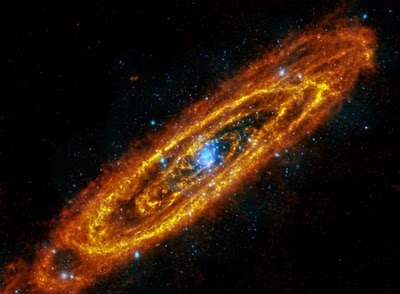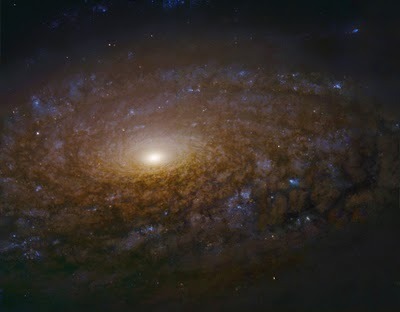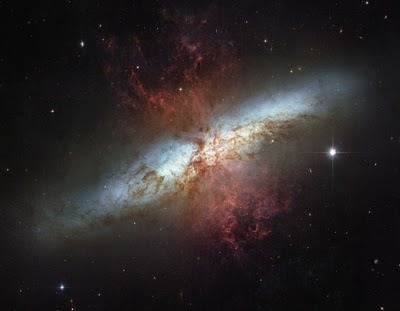Eleanor Arnason's Blog, page 82
January 28, 2011
V for Vendetta in Cairo

I don't usually download pictures that are copyrighted, but I couldn't resist this one in The Guardian.
Published on January 28, 2011 12:40
Demonstrations
The Tunisian government has fallen after massive demonstrations. There are massive demonstrations going on in Egypt right now, covered live by Al Jazeera. There have been demonstrations in Yemen and Jordan in the last day or two.
Per The Guardian today:

Per The Guardian today:
But despite the talk of a "Twitter revolution" it is worth remembering that the specific events that helped fuel this uprising (in Egypt) happened offline. On top of the long-burning grievances of political oppression and economic hardship, it was a 2008 strike by textile workers in the Nile Delta town of Mahalla al-Kubra that fired the imagination of many of those on the streets today. The three people shot dead by security forces during the Mahalla unrest on 16 April inspired an online movement which took its name from the date.
The traditional working class from all corners of the country have continued to provoke and inspire dissident activity ever since, occupying pavements outside parliament for weeks on end to highlight the devastating impact of the neoliberal reforms pursued by the ruling NDP party. Some trade unions – most notably the real estate tax collectors – have gone on to break free from state control.
Away from the economic concerns, anger at police corruption and brutality has been at the heart of the new wave of protest. "We are all Khaled Said," a Facebook group dedicated to the memory of a young Alexandrian man beaten to death by police last year, quickly gained a huge following. Its message of solidarity against the security forces attracted young people who had never before taken part in political activism. "I had never joined any protests before. I didn't believe in the people leading them," said Adef Husseini, a call centre worker in Cairo who took to the street on Tuesday. "Now, though, the people are the leaders."
But what started on Tuesday with a set of specific demands – the resignation of the interior minister, the end of emergency law, and the imposition of a two-term limit on the presidency – has coalesced into something far more radical and brought countless more people, whose latent hostility to the Mubarak regime had never before translated into concrete action, into confrontation with the state.
Published on January 28, 2011 08:55
NanoSail!

Featured in this artist's illustration, NASA's NanoSail-D finally unfurled a very thin, 10 square meter reflective sail on January 20th, becoming the first solar sail spacecraft in low Earth orbit. Often considered the stuff of science fiction, sailing through space was suggested 400 years ago by astronomer Johannes Kepler who observed comet tails blown by the solar wind. Modern solar sail spacecraft designs, like NanoSail-D or the Japanese interplanetary spacecraft IKAROS, rely on the small but continuous pressure from sunlight itself for thrust. Glinting in the sunlight as it circles planet Earth, the NanoSail-D solar sail will periodically be bright and easily visible to the eye. In fact, skygazers are urged to participate in an ongoing contest to capture images of NanoSail-D. The images will help NASA monitor the satellite before it reenters the atmosphere in April or May.
Published on January 28, 2011 05:12
January 20, 2011
NASA Photo of the Day

The big, beautiful Andromeda Galaxy, aka M31, is a spiral galaxy a mere 2.5 million light-years away. Two space-based observatories have combined to produce this intriguing composite image of Andromeda, at wavelengths outside the visible spectrum. The remarkable view follows the locations of this galaxy's once and future stars. In reddish hues, image data from the large Herschel infrared observatory traces enormous lanes of dust, warmed by stars, sweeping along Andromeda's spiral arms. The dust, in conjunction with the galaxy's interstellar gas, comprises the raw material for future star formation. X-ray data from the XMM-Newton observatory in blue pinpoint Andromeda's X-ray binary star systems. These systems likely contain neutron stars or stellar mass black holes that represent final stages in stellar evolution. More than twice the size of our own Milky Way, the Andromeda Galaxy is over 200,000 light-years across.
Published on January 20, 2011 07:06
January 13, 2011
NASA Photo of the Day
 Gorgeous spiral galaxy NGC 3521 is a mere 35 million light-years distant, toward the constellation Leo. Spanning some 50,000 light-years, its central region is shown in this dramatic image, constructed from data drawn from the Hubble Legacy Archive. The close-up view highlights this galaxy's characteristic multiple, patchy, irregular spiral arms laced with dust and clusters of young, blue stars. In constrast, many other spirals exhibit grand, sweeping arms. A relatively bright galaxy in planet Earth's sky, NGC 3521 is easily visible in small telescopes, but often overlooked by amateur imagers in favor of other Leo spiral galaxies, like M66 and M65.
Gorgeous spiral galaxy NGC 3521 is a mere 35 million light-years distant, toward the constellation Leo. Spanning some 50,000 light-years, its central region is shown in this dramatic image, constructed from data drawn from the Hubble Legacy Archive. The close-up view highlights this galaxy's characteristic multiple, patchy, irregular spiral arms laced with dust and clusters of young, blue stars. In constrast, many other spirals exhibit grand, sweeping arms. A relatively bright galaxy in planet Earth's sky, NGC 3521 is easily visible in small telescopes, but often overlooked by amateur imagers in favor of other Leo spiral galaxies, like M66 and M65.
Published on January 13, 2011 07:18
January 7, 2011
Recent Reading
I read Jack McDevitt's new novel Echo, which I went right through. He writes an odd combination of cozy mystery and space opera. This book, not my favorite, is mostly cozy mystery with only a little space opera at the end. I say it's an odd combination, because cozies rely on the familiar and the safe. The murder that happens is not safe, but the world into which the murder intrudes is one of small towns, country houses, comfortable neighbors, adequate incomes, where life goes on (mostly) in more or less ordinary ways, without large and frightening changes.
Space opera, on the other hand, is about huge distances, vast expanses of time, change and danger.
In order to be cozy, McDevitt's books have to give us the familiar: characters with recognizable Anglo-Saxon names, societies very much like our own -- but set in the far future, when humans have faster-than-light travel.
I enjoy his books, even though I don't believe that a society with FTL travel will be like our society, and I don't expect the future to be peopled with humans with Western European names.
The other book I have been reading is Iain M. Banks' most recent novel, Surface Detail. His space operas are full of horrifying violence and cruelty. I am well into this one and thinking, "Why am I reading this?" If I want to read about torture and murder, I will read the news; and I do try to keep up on the news -- not the human interest crimes, but the political and economic crimes. They are horrible and enraging. I don't much want to read such material for entertainment.
The message of Banks' novels seems to be, This is what war is really like; this is what capitalism is really like. What else is new? I figure fiction ought to give a new insight on the world, and best of all -- a way to change the world. Not a complete blueprint for utopia, but ideas for a better life on a better-run planet.
So is this the current problem for science fiction? Are visions of the future either too horrible to contemplate or unconvincingly cozy?
Probably not. There is a lot of science fiction published. But coming up with a convincing vision of future that is not utterly depressing is difficult.
Space opera, on the other hand, is about huge distances, vast expanses of time, change and danger.
In order to be cozy, McDevitt's books have to give us the familiar: characters with recognizable Anglo-Saxon names, societies very much like our own -- but set in the far future, when humans have faster-than-light travel.
I enjoy his books, even though I don't believe that a society with FTL travel will be like our society, and I don't expect the future to be peopled with humans with Western European names.
The other book I have been reading is Iain M. Banks' most recent novel, Surface Detail. His space operas are full of horrifying violence and cruelty. I am well into this one and thinking, "Why am I reading this?" If I want to read about torture and murder, I will read the news; and I do try to keep up on the news -- not the human interest crimes, but the political and economic crimes. They are horrible and enraging. I don't much want to read such material for entertainment.
The message of Banks' novels seems to be, This is what war is really like; this is what capitalism is really like. What else is new? I figure fiction ought to give a new insight on the world, and best of all -- a way to change the world. Not a complete blueprint for utopia, but ideas for a better life on a better-run planet.
So is this the current problem for science fiction? Are visions of the future either too horrible to contemplate or unconvincingly cozy?
Probably not. There is a lot of science fiction published. But coming up with a convincing vision of future that is not utterly depressing is difficult.
Published on January 07, 2011 08:33
January 2, 2011
SF in Trouble
This is from an interview with Ted Chiang, though this quote comes from Gavin Grant:
The quote interests me, because it answers part of my question, where is SF going? What has been happening in the field? It's a better answer than the one I gave in the previous post.
"Science fiction is one of the biggest threads in popular entertainment," Grant says. "There are lots of big movies, lots of TV shows based on science fiction premises, but science fiction is having this real trouble looking into the future and imagining what will happen. To look a decade or a hundred years in the future is very difficult, and there are a couple of outs that writers have been using. One, they say it's too difficult to look into the future so we don't have to, we can just write fantasy. Or they just look in the past and write steampunk and things like that. Don't get me wrong, I like these things, but I think one of the things Ted does is to extrapolate rigorously and somewhat harshly, in a way that people can recognize from the life they're living."
The quote interests me, because it answers part of my question, where is SF going? What has been happening in the field? It's a better answer than the one I gave in the previous post.
Published on January 02, 2011 08:40
December 23, 2010
An Answer
I put the preceding post on the Wyrdsmiths website and got the following reply from Lyda Morehouse.
Bruce Sterling coined "slipstream" in 1989. The Sterling-Gibson steampunk novel The Difference Engine came out in 1990. And cyberpunk can possibly be described as cross-genre, since it combines science fiction with noir detective. Sterling has a lot to answer for.
So starting around 1990 or maybe earlier, we have science fiction/fantasy that is mixed with literary fiction, noir, romance and so on.
Science fiction was always a pulp fiction, that borrowed from other kinds of pulp fiction. But I still think we are looking at something new. Now we have writers like Jonathan Letham and Michael Chabon, who are so literary that they are barely in our field, as well as of hordes of steampunk and paranormal romance.
At the same time, we have the New Space Opera, which revives old science fiction tropes or gimmicks, sometimes using them in interesting ways. The expansion from the claustrophobic, near-future world of cyberpunk was a relief, though I wonder what it tells us. The last time space opera was popular was the 30s and 40s, a time of very great stress and threat.
The range in New Space Opera goes from Lois Bujold's Miles Vorkosigan stories to Iain M. Banks' Culture novels. Bujold began publishing in 1986, and most of her Vorkosigan stories came out in the 1990s. The first Culture novel came out in 1987, and Banks has continued producing them up to the present time. One thing true about both Bujold and Banks is, they know they are playing with cliches. There is a certain lack of sincerity in their treatment of space opera. Bujold uses it to talk about 'family' issues: reproduction and disability, love and marriage. Banks produces space opera that makes clear the brutality of war fiction, even if dressed up with ray guns and interstellar fleets.
Perhaps it's too soon to categorize the '90s, but it was the time I broke in, so I'd call it the decade of cross-genre, which led to the rise of urban fantasy/paranormal romance.I like this answer.
Bruce Sterling coined "slipstream" in 1989. The Sterling-Gibson steampunk novel The Difference Engine came out in 1990. And cyberpunk can possibly be described as cross-genre, since it combines science fiction with noir detective. Sterling has a lot to answer for.
So starting around 1990 or maybe earlier, we have science fiction/fantasy that is mixed with literary fiction, noir, romance and so on.
Science fiction was always a pulp fiction, that borrowed from other kinds of pulp fiction. But I still think we are looking at something new. Now we have writers like Jonathan Letham and Michael Chabon, who are so literary that they are barely in our field, as well as of hordes of steampunk and paranormal romance.
At the same time, we have the New Space Opera, which revives old science fiction tropes or gimmicks, sometimes using them in interesting ways. The expansion from the claustrophobic, near-future world of cyberpunk was a relief, though I wonder what it tells us. The last time space opera was popular was the 30s and 40s, a time of very great stress and threat.
The range in New Space Opera goes from Lois Bujold's Miles Vorkosigan stories to Iain M. Banks' Culture novels. Bujold began publishing in 1986, and most of her Vorkosigan stories came out in the 1990s. The first Culture novel came out in 1987, and Banks has continued producing them up to the present time. One thing true about both Bujold and Banks is, they know they are playing with cliches. There is a certain lack of sincerity in their treatment of space opera. Bujold uses it to talk about 'family' issues: reproduction and disability, love and marriage. Banks produces space opera that makes clear the brutality of war fiction, even if dressed up with ray guns and interstellar fleets.
Published on December 23, 2010 06:18
December 19, 2010
Where is the Field Going?
Above is the question of the day. It used to be that you could come up with broad and not entirely correct descriptions of sf decade by decade.
The 1940s was the Golden Age of John Campbell and Astounding.
The 1950s was Fantasy and Science Fiction and Galaxy -- the quirky, gritty stories by people like Cyril Kornbluth, William Tenn and so on. Post WWII, McCarthy Era fiction.
The 1960s was the New Wave.
The 1970s was women and feminism.
The 1980s was Cyberpunk.
After that, I don't know. I can't characterize the 1990s. The new space opera, maybe?
And what about the most recent decade, the Naughts? Are there any new schools of writing? Any new trends?
The most interesting thing I have noticed is the appearance of increasing numbers of non-white writers and writers from non-European backgrounds.
The 1940s was the Golden Age of John Campbell and Astounding.
The 1950s was Fantasy and Science Fiction and Galaxy -- the quirky, gritty stories by people like Cyril Kornbluth, William Tenn and so on. Post WWII, McCarthy Era fiction.
The 1960s was the New Wave.
The 1970s was women and feminism.
The 1980s was Cyberpunk.
After that, I don't know. I can't characterize the 1990s. The new space opera, maybe?
And what about the most recent decade, the Naughts? Are there any new schools of writing? Any new trends?
The most interesting thing I have noticed is the appearance of increasing numbers of non-white writers and writers from non-European backgrounds.
Published on December 19, 2010 08:07
NASA Photo of the Day

What's lighting up the Cigar Galaxy? M82, as this irregular galaxy is also known, was stirred up by a recent pass near large spiral galaxy M81. This doesn't fully explain the source of the red-glowing outwardly expanding gas, however. Recent evidence indicates that this gas is being driven out by the combined emerging particle winds of many stars, together creating a galactic superwind.. The above photographic mosaic highlights a specific color of red light strongly emitted by ionized hydrogen gas, showing detailed filaments of this gas. The filaments extend for over 10,000 light years. The 12-million light-year distant Cigar Galaxy is the brightest galaxy in the sky in infrared light, and can be seen in visible light with a small telescope towards the constellation of the Great Bear (Ursa Major).
Published on December 19, 2010 06:27
Eleanor Arnason's Blog
- Eleanor Arnason's profile
- 73 followers
Eleanor Arnason isn't a Goodreads Author
(yet),
but they
do have a blog,
so here are some recent posts imported from
their feed.



